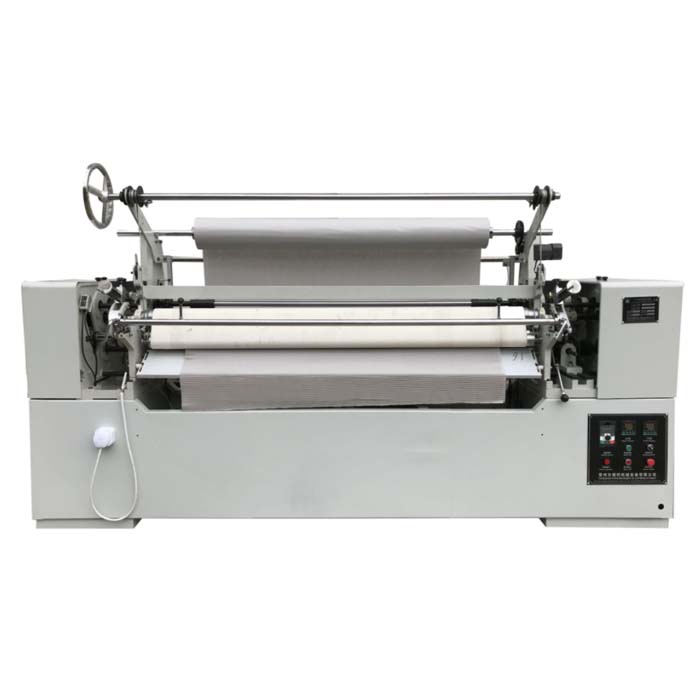Fabric pleating machines are an essential tool for textile manufacturing industries that produce pleated fabrics. Pleating is a process that creates a pattern of folds on a fabric, creating a textured and dynamic appearance. A pleating machine allows for precise, consistent pleating, reducing production time and increasing efficiency.
The traditional method of fabric pleating involves a labor-intensive process, which includes measuring and marking the fabric, folding it by hand, and then securing it with pins or clamps. The fabric is then pressed with a hot iron to set the pleats, a process that requires skill and precision. This process can be time-consuming and expensive, especially when it comes to large-scale production.
A fabric pleating machine automates this process, making it faster and more efficient. The machine is equipped with a series of rollers, which pull the fabric through a series of blades that create uniform pleats. The rollers move at a constant speed, ensuring that the pleats are consistent in size and distance.
Applications of fabric pleating machine
1.Fashion and Accessories:
Pleated fabric is an essential element in fashion design. By using the pleating machine, various pleat patterns can be produced to create different styles of clothing and accessories. Pleated fabric can be used to make dresses, skirts, tops, scarves, ties, and more.
2.Home Decor:
Pleated fabric is also commonly used in home decor. It can be used to make curtains, tablecloths, pillowcases, bedspreads, and more. Using the pleating machine, various pleat patterns can be added to home decor items, adding texture and dynamic appearance to the design.
3.Stage Costumes and Performance Wear:
Pleated fabric is widely used in stage costumes and performance wear. Using the pleating machine, various pleat patterns can be created to add dramatic effects to the costumes, enhancing the visual impact of the performance.
4.Industrial Applications:
Pleated fabric is also used in various industrial applications such as automotive interiors, ship interiors, airplane interiors, and more. By using the pleating machine, these applications can benefit from efficient, consistent, and precise manufacturing processes, leading to higher production efficiency and quality.
Advantages of fabric pleating machine
1.Increased efficiency:
The pleating machine automates the pleating process, eliminating the need for manual measuring, folding, and pressing, thereby increasing the production speed and efficiency.
2.Consistent results:
The pleating machine ensures that each pleat is the same size and shape, resulting in a uniform appearance across the fabric. This consistency is difficult to achieve by hand, particularly when producing large quantities of pleated fabric.
3.Versatility:
The pleating machine can create a wide range of pleat patterns, from basic accordion pleats to more complex designs such as box pleats and sunburst pleats. This versatility allows designers to create unique and innovative fabric textures.
4.Cost-effective:
By automating the pleating process, the pleating machine reduces the labor costs associated with traditional pleating methods. Additionally, the machine minimizes fabric waste by producing precise pleats, leading to cost savings for manufacturers.
Conclusion
In summary, the fabric pleating machine is used in various textile industry applications, from fashion design and home decor to stage costumes, performance wear, and industrial applications. By using this machine, designers and manufacturers can create various pleat patterns to enhance the design and improve the efficiency and quality of the manufacturing process.
REHOW provides the textile industry machines to the whole world, helps them to improve the efficient, decrease the labor costs. REHOW offers numerous types of textile machinery: fabric pleating machine, fabric inspection machine, fabric packing machine, trolley lift, fabric rolling machine etc. If you are interested in us, please contact us now!
Post time: Apr-12-2023






